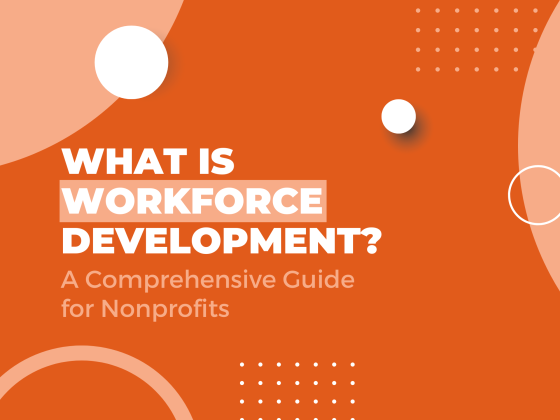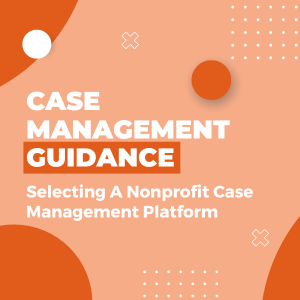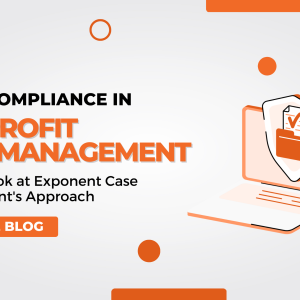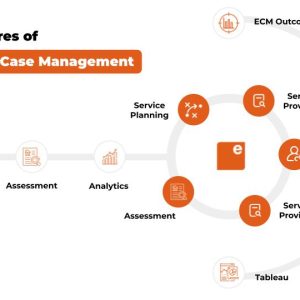What Is Workforce Development? A Comprehensive Guide for Nonprofits
Workforce development is a term that has gained increased attention in recent years, particularly in the context of economic growth, job creation, and workforce training. According to the National Skills Coalition, nearly 80 million adults in the United States lack the basic skills and credentials needed to succeed in the 21st-century workforce. Workforce development programs offer a pathway to address this challenge, providing individuals with the skills and knowledge they need to obtain and maintain employment. For nonprofit organizations, workforce development can be a critical tool for advancing their mission of addressing social and economic inequality. In this post, we’ll provide a comprehensive guide to workforce development for nonprofits, covering topics such as skills training, job readiness, and career counseling. We’ll explore the key components of effective workforce development programs, as well as best practices and types of programs to consider. Whether you’re a nonprofit leader looking to expand your organization’s services or a program manager seeking to improve your workforce or employment program offerings, this guide will provide you with the knowledge and resources you need to make informed decisions. Let’s get started!
What is Workforce Development?
The term workforce development refers to a broad range of activities that aim to enhance workers’ skills, knowledge, and abilities in order to improve their employability and earnings potential. This can include programs and services that help individuals obtain education and training, develop job readiness skills, and access employment opportunities. Workforce development can also encompass efforts to improve the quality and productivity of the workforce as a whole, such as through industry-specific training programs and partnerships between employers and education providers.
Nonprofit Organizations Play a Vital Role in Workforce Development
For nonprofit organizations, workforce development can be a critical tool for advancing their mission of addressing social and economic inequality. By providing individuals with the skills and knowledge they need to obtain and maintain employment, nonprofits can help to remove social and behavioral barriers, promote economic mobility, and support the growth of local economies. Workforce or employment programs also help nonprofits to foster partnerships with employers and other stakeholders in their communities, and can provide a platform for engaging and empowering the individuals and communities they serve.
Brief History of Workforce Development
Workforce development has its roots in the vocational education and training programs that emerged in the early 20th century. These programs were designed to provide workers with the technical skills and knowledge they needed to succeed in a rapidly changing economy. In the decades since, workforce development has evolved to encompass a broader range of programs and services, including adult education and literacy programs, job training and placement services, and employer-focused initiatives such as apprenticeships and work experience programs. Today, workforce development is a key component of many national and international economic development strategies, and plays an important role in shaping the future of work.
3 Major Key Components of Workforce Development Programs
To effectively prepare individuals for employment, workforce development programs must incorporate key components that provide the necessary skills, knowledge, and resources for success. The following are three key components of workforce development programs:
Skills training
Skills training programs or services are designed to equip individuals with the skills and knowledge needed to perform specific job tasks. These programs can take many forms, including vocational training, on-the-job training, and apprenticeships. Vocational training programs often provide hands-on instruction in a particular trade or field, while on-the-job training provides practical experience in a workplace setting. Apprenticeships combine classroom instruction with on-the-job training, allowing individuals to learn a trade while earning a wage. Exponent Case Management customer, the Center for Employment Opportunities shares how they connect skills training to better employment outcomes in a recent webinar.
Skills training is critical for job readiness, as it provides individuals with the specific skills and knowledge needed to succeed in their chosen field. Without these skills, individuals may struggle to find and keep employment.
Job readiness
Job readiness programs prepare individuals for the job search process, including resume writing, job application submission, and interview preparation. These programs can also teach job search strategies, such as networking and using online job boards.
Job readiness is a critical component of workforce development programs, as it ensures that individuals are prepared to find and apply for jobs effectively. Without job readiness skills, individuals may struggle to secure employment even with the necessary skills and knowledge.
Career counseling
Career counseling programs provide individuals with guidance on career development, including identifying their strengths and interests, exploring career options, and creating a career plan. These programs may also provide support for continuing education or training, as well as job placement assistance.
Career counseling is essential for helping individuals make informed career decisions and achieve their goals. By providing guidance and support, career counseling programs can help individuals navigate the job market and find meaningful employment.
Ultimately, workforce development programs must incorporate these key components to effectively prepare individuals for employment. By providing skills training, job readiness support, and career counseling, these programs can help individuals succeed in the workforce and achieve their career goals.
Types of Workforce Development Programs
Workforce development programs come in various forms, each designed to address different needs and goals. The following are four types of workforce development programs:
Adult education and literacy programs
Adult education and literacy programs aim to improve the basic skills and knowledge of adults, including reading, writing, and math. These programs can help adults obtain a high school diploma or equivalent, as well as prepare for college or career training. They may also provide training in digital literacy, English as a second language, and workforce skills such as teamwork and problem-solving. For example, Local Initiatives Support Corporation (LISC), a long-time Exponent Case Management client, works to connect hard-to-access public and private resources with underinvested people working to gain access to the opportunities we all deserve. Learn more about how LISC is advancing digital literacy here.
Vocational education and training programs
Vocational education and training programs provide hands-on training and instruction in a specific trade or field. These programs are designed to prepare individuals for entry-level jobs in fields such as construction, healthcare, and information technology. They may offer certifications or degrees, and some programs are available through community colleges or technical schools. One example of a nationwide program that offers vocational education, on-the-job training, and career counseling for those impacted by the justice system is the Center for Employment Opportunities. They provide same-day payment to day laborers, which helps to eliminate economic barriers faced by many individuals returning from prison, especially when re-entering the job market.
Apprenticeship programs
Apprenticeship programs combine classroom instruction with on-the-job training, allowing individuals to learn a trade while earning a wage. These programs typically last several years and are available in fields such as construction, manufacturing, and healthcare. Apprenticeships provide structured training and support, as well as the opportunity to build a network of professional contacts.
Internship and work experience programs
Internship and work experience programs provide individuals with the opportunity to gain practical experience in a particular field. These programs can take many forms, including paid and unpaid internships, co-op programs, and work-study programs. They may be available through educational institutions, government agencies, or private companies, and can provide individuals with valuable skills and connections for future employment.
Workforce development programs come in various forms, each designed to address different needs and goals. Adult education and literacy programs can improve basic skills, vocational education and training programs can prepare individuals for entry-level jobs, apprenticeship programs can provide structured training and support, and internship and work experience programs can offer practical experience and professional connections.
Stages of Workforce Development Programs
Effective workforce development programs involve more than just training and job placement. By engaging with employers and providing wraparound services, these programs can help create lasting impact for the communities they serve. Here are four important stages that successful workforce development programs should adopt.
Needs assessment
The needs assessment process involves identifying the skills, experience, and education required by employers in a particular industry or occupation. This can be done through research and analysis of labor market data, employer surveys, and focus groups with job seekers.
By conducting a needs assessment, workforce development programs can design training and education programs that meet the specific needs of employers and job seekers in their local community. This helps ensure that program participants gain the skills and knowledge they need to succeed in their chosen career, and that employers have access to a trained and qualified workforce.
Curriculum development
The curriculum development process involves creating training and education programs that are tailored to the specific needs of program participants and employers. This includes developing course materials, lesson plans, and instructional methods that are effective and engaging.
Effective curriculum development is critical to the success of workforce development programs. By designing programs that are aligned with the needs of employers and program participants, programs can ensure that participants gain the skills and knowledge they need to succeed in their chosen career.
Employer engagement
Employer engagement strategies involve building relationships with employers at the grassroots level to identify employment opportunities and align education and training programs with staffing needs. This can include developing partnerships with employers, attending industry events and job fairs, and offering on-the-job training programs.
Close relationships with employers are critical to the success of workforce development programs. By staying informed about industries and occupations, understanding the current needs and challenges of the labor market, and gaining access to employers’ professional networks, workforce development programs can better align their services with the needs of employers and program participants.
Program evaluation
The program evaluation process involves collecting data on the outcomes of workforce development programs, analyzing this data, and using it to improve program design and delivery. This can include collecting data on program participation rates, job placement rates, and participant retention rates.
Effective program evaluation is critical to the ongoing improvement of workforce development programs. By measuring program outcomes, workforce development organizations can secure funding, meet WIOA reporting requirements, and continually improve their services.
Best Practices for Workforce Development Programs
Effective workforce development programs involve more than just training and job placement. By engaging with employers and providing wraparound services, these programs can help create lasting impact for the communities they serve. Here are five best practices that successful workforce development programs should adopt.
Active employer engagement
Successful workforce development programs prioritize active employer engagement. Building relationships with employers at the grassroots level helps identify employment opportunities and align education and training programs with staffing needs. Close relationships with employers also allow workforce development organizations to stay informed about industries and occupations, understand the current needs and challenges of the labor market, and gain access to employers’ professional networks.
Think beyond job placement
The strongest workforce development programs look beyond job placement and prioritize job retention and satisfaction. Programs should aim to create a stable and committed workforce that contributes to economic stability for all involved. Identifying potential for career growth or future training can help both employers and employees in the long-term.
Provide wraparound services
Effective workforce development programs offer wraparound services to help remove barriers to employment. By partnering with other human services agencies to better serve the holistic needs of their constituents, workforce development organizations can increase their impact, remove more barriers, and contribute to a long-term, sustainable approach to gainful employment.
Get a technology backbone
Investing in a powerful, integrated case management system can help workforce development programs increase staff efficiency, serve more clients, and work smarter. Most sophisticated case management systems have built-in integration capabilities that allow organizations to work directly with partner organizations around wraparound services or referrals.
Measure, evaluate, and demonstrate
To effectively measure and demonstrate the effectiveness of workforce development programs, organizations need access to data and reporting capabilities. By measuring their programs, workforce development organizations can secure funding, meet WIOA reporting requirements, and continually improve their services.
By adopting these best practices and strategies, workforce development programs can create meaningful change in the communities they serve.
How Can Exponent Case Management Help?
This high level overview can seem daunting at first, but know there is a solution out there to help you with the vast majority of the elements you’ll need for a successful and thriving workforce organization. From needs assessment, to participant and program evaluation, down to employer engagement and then being able to report on it all, Exponent Case Management has you covered!
With the help of Exponent Case Management’s workforce development solution, workforce development organizations can achieve radically better outcomes for participants, while optimizing performance and managing programs with ease. Our software is designed to help organizations meet complex funder requirements like WIOA and Vocational Rehabilitation, ensuring compliance and maximizing funding opportunities.
The Workforce Development module is a starting point for organizations to use right out of the box or tailor it to their specific operational needs. This module supports your team at every stage of implementing your program, from intake and skills assessment to tracking each participant’s progress from job coaching to placement and retention.
If you’re ready to learn more, watch our full webinar video with insights and best practices for workforce development. Sign up to gain access to the webinar and discover how Exponent Case Management’s features and capabilities can empower your organization.




